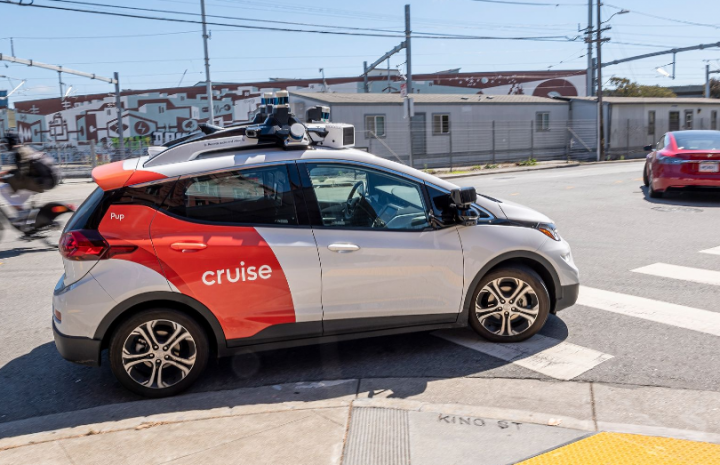It was only a short time ago when the GM-backed company Cruise received permission to operate driverless robotaxis in San Francisco, but that’s changed.
Cruise won big when it was permitted to operate its autonomous vehicles on the roads in San Francisco. This grant of operation wasn’t without testing and proving the service could be reliable, but a recent accident has changed everything for the GM-backed company. This could be a huge win for drivers against these autonomous vehicles, which have a long way to go before they can be allowed on public roads once again. Cruise has been banned across California after a recent accident.
Some hated the idea of driverless vehicles
Cruise and Waymo have faced ridicule and tampering around San Francisco during the entire time these companies have operated in the city. Cruise robotaxis can be defeated with traffic cones placed on the hood, and many feel these cars cause traffic jams when making strange diving decisions. This discomfort with self-driving vehicles has finally been realized with a recent accident that nearly cost a life, which is certainly not worth the trouble of having self-driving cars on any road. This accident has changed things for Cruise.
Horrifying accident and withheld evidence
The accident in question shows a Cruise robotaxi making a hard stop when a pedestrian, which had been hit by a human-driven car, was in the road. The Cruise vehicle then drove for nearly 20 feet with the victim pinned underneath it. Footage of this incident was initially withheld, and additional footage was shown by an unnamed government agency. When confronted, Cruise finally revealed the rest of the video evidence, which is suspicious in nature. The full video was eventually shared and played many times, with many viewers unable to understand how a vehicle could continue to drag a person underneath it.
Cruise lost its license immediately
You won’t see any Cruise robotaxis on any California roads now or in the near future. The company has suspended operations in San Francisco once given a suspension after the horrific accident. Lifting this suspension could take several steps that have not been revealed by the California DMV. This suspension doesn’t mean Cruise cannot operate at all; these cars can continue to drive on the roads under testing conditions but must do so with a safety driver behind the wheel. This could be problematic for the company that had already lost millions of dollars during the testing phase.
Government officials take aim at Waymo
During this issue with Cruise, Waymo has been able to avoid problems and a potential ban. That doesn’t mean Waymo isn’t under fire from government officials. In fact, Los Angeles City Council member Hugo Soto-Martinez is urging California state officials to take a harder look at Waymo and create laws to ban Waymo, which has had more incidents than Cruise and the most automated driving system crashes of any self-driving company. It’s easy to see how California officials can be against driverless vehicles in their state.
The ban on Cruise robotaxis is applauded by the Teamsters
A union built by truck drivers isn’t going to be supportive of anything that could potentially replace its membership. The Cruise vehicles could certainly do that if these vehicles are allowed to be legalized for travel on public roads. The local Teamsters were happy with the suspension of Cruise, but felt this action isn’t enough by the California government. Of course, this union isn’t going to be pleased with self-driving vehicles, especially with the looming possibility that semi-trucks will be the next to receive the driverless application.
Cruise takes a step back
Unlike Tesla, Cruise has taken a huge step back to ensure its fleet will be safe and operational when the time comes that a new opportunity is presented. Cruise has suspended all operations across the United States in a statement on X, which says:
“We have decided to proactively pause driverless operations across all of our fleets while we take time to examine our processes, systems, and tools and reflect on how we can better operate in a way that will earn public trust.”
Autonomous vehicles must be flawless
Although the old saying “you can’t make an omelet without breaking a few eggs” means that some failures and accidents are expected for any success, but not at the expense of lives. This means that self-driving vehicles must be flawless before heading back out on public roads. Cruise thought they had everything figured out with their robotaxis, but more testing and proof must be done.
This post may contain affiliate links. Meaning a commission is given should you decide to make a purchase through these links, at no cost to you. All products shown are researched and tested to give an accurate review for you.

